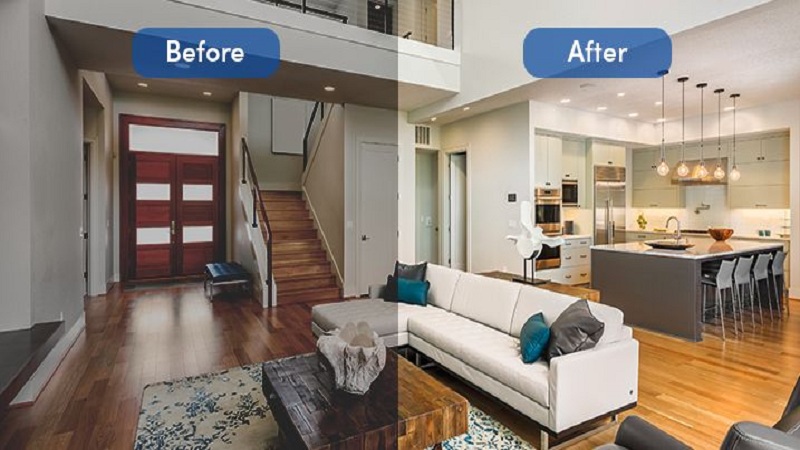Real estate photo editing tips. High-quality images not only highlight a property’s key features but also set the first impression for prospective clients. Consequently, integrating effective photo editing techniques can significantly enhance these images, making listings more appealing and informative. Understanding the foundational aspects of real estate photo editing is essential for any real estate professional looking to elevate their marketing strategy.
Understanding the Basics of Real Estate Photo Editing
One of the fundamental techniques in photo editing is cropping. This allows editors to focus on the most important elements of a property, eliminating unnecessary distractions from the frame. Properly cropped images can create a more engaging visual story, helping potential buyers to envision their future home. Additionally, adjusting brightness and contrast is vital in photo editing; it can bring out details in both shadows and highlights, enhancing the overall image clarity and depth.
Color correction is another significant editing technique. Images that accurately represent physical appearances will instill confidence in potential buyers. Ensuring that the colors of walls, flooring, and outdoor spaces reflect their true shades helps in creating a vivid and authentic representation of the property. Tools like Adobe Lightroom and Photoshop offer an array of features specifically designed for these purposes, allowing real estate agents to polish their images systematically.
Furthermore, maintaining a natural look while making enhancements is critical. Over-editing can lead to a misrepresentation of a property, ultimately disappointing buyers upon visit. It is essential to strike a balance between enhancing the image and preserving its authenticity. By applying these basic editing techniques judiciously, real estate professionals can create compelling visual narratives that significantly influence a property’s marketability.

Advanced Editing Techniques for Stunning Real Estate Photos
In the competitive world of real estate, capturing high-quality photographs is essential for listing properties effectively. Utilizing advanced photo editing techniques can significantly elevate the appeal of these images, transforming ordinary visuals into captivating representations of homes. One impactful method is sky replacement, where the sky in the photograph is swapped with a more visually appealing version. This technique not only improves the overall natural lighting of the image but also enhances the mood and atmosphere, making properties more inviting. A vibrant blue sky, for example, can create a fresh appeal that resonates with potential buyers.
Another crucial method is HDR (high dynamic range) imaging. This technique combines multiple exposures to produce a single photograph that showcases a broader range of shadows and highlights. By adjusting the exposure and merging the images, HDR allows for better detail in both bright and dark areas. This results in images that appear more lifelike and detailed, making it an effective strategy for showcasing interiors where lighting conditions may vary greatly.
Additionally, the use of filters can dramatically improve the aesthetic of real estate photos. Applying warm filters can soften the image, making spaces feel cozier and more inviting. Moreover, filters can enhance certain features of the property, such as highlighting architectural details or enhancing colors in furnishings and landscaping, which can be crucial for engaging potential buyers.
Staging edits also play a vital role in creating appealing listings. This can include removing clutter from images or emphasizing specific architectural characteristics. By honing in on these elements, real estate agents present the property in its best light, ensuring that listings convey a sense of space and style. These advanced photo editing techniques not only enhance the visual appeal but also contribute to a more profound connection with prospective buyers, ultimately leading to more successful property sales.
Best Practices for Consistent and Professional Results
To achieve consistent and professional results in real estate Photo editing, establishing a reliable workflow is essential. A structured approach to editing can not only enhance the quality of the images but also streamline the entire process. Begin by developing a checklist that outlines each step of your editing workflow, from importing images to finalizing and exporting. This will help ensure that no critical aspect of editing is overlooked and that the quality of all listings remains uniform.
Maintaining a cohesive style across all photos associated with a particular listing is vital for establishing a strong visual identity. Agents and photographers should consider creating presets that can be applied to various images, ensuring that colors, brightness, and contrasts are uniform. By doing this, every photo will present a harmonious look, reinforcing the overall appeal of the listing. It is also advantageous to review and compare images from previous listings, as this can serve as a benchmark for the desired style and quality.
Furthermore, delivering images in the correct format and resolution for diverse platforms is crucial. Real estate listings typically appear on multiple channels, including websites, social media, and print media. Ensure that images are optimized for each platform while maintaining high resolution to enhance visibility and attract potential buyers. A common practice includes exporting images in multiple formats tailored to each platform, such as JPEG for online listings and TIFF for high-quality prints.
Related articles: Real estate photo editing
Time management is an often-overlooked aspect of photo editing. Allocate specific time frames for each project and utilize collaborative tools, especially when working within a team. These tools facilitate seamless communication and ensure that deadlines are met while maintaining high editing standards. By following these best practices, real estate agents and photographers can achieve consistent and professional results that contribute to successful property listings.

